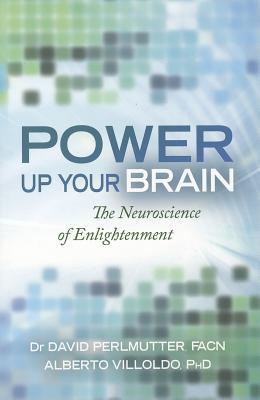More on this book
Kindle Notes & Highlights
Read between
September 9 - November 18, 2023
whenever a situation is even faintly similar to some painful event from your past, a red flag goes up in your mammalian brain and you perceive it as a possible threat. This is because trauma is not what actually happened but how you stored it as a story in your mind.
Alberto: Soul Retrieval
ENDING THE PROPENSITY FOR SUFFERING
For many years, psychology embraced the idea that destructive emotions could be repaired with therapy, a view that is questioned today by some practitioners,
we continue to subscribe to debilitating narratives—many of them of our own creation—about who we are and what we are capable of accomplishing. And we keep buying self-help titles that perennially top the best-seller lists!
So, why don’t we get better? Because we are looking for answers in all the wrong places.
Alberto: Gaining Respect for Self
CHAPTER 6 HOW STRESS HARMS THE BRAIN
SOCIETAL AND ENVIRONMENTAL STRESS
Those who used insecticides in the garden showed a 50 percent increased risk of the disorder
In-home use of insect-killing chemicals was associated with a 70 percent increased risk of Parkinson’s disease,
it’s common knowledge that mercury fillings used by dentists release toxic gases that are readily absorbed by fat in the brain,
ACUTE AND CHRONIC STRESS
Acute stress is relatively short-lived. It’s what you encounter when faced with a novel learning situation,
Chronic stress is long-lasting. It occurs when you worry all month about how you’re going to make your mortgage payment,
Our bodies have a system in place to deal with stress. The HPA axis—which refers to three organs, the hypothalamus, the pituitary, and the adrenal glands—regulates our fight-or-flight system.
If the amygdala perceives an imminent threat, the HPA axis, rather than passing the signal along to the neocortex for logical processing, releases stress hormones—cortisol and adrenaline— into the bloodstream.
we can get locked into a state of chronic stress when the adrenal glands don’t receive a signal to stop producing these hormones.
In Colonial times the legendary pirates of the Caribbean learned that citizens in a city under siege were more effectively worn down by the sound of cannons firing than by the actual damage done to their town by the cannonballs.
Long-term exposure to stress has very profound consequences.
THE DETRIMENTAL EFFECTS OF CHRONIC STRESS
the stress hormone cortisol, which is produced in excessive amounts when the HPA axis is locked in a state of chronic stress, increases the damaging effects of free radicals in the neurons of the hippocampus.
The final act in this tragic play is that the hippocampal neurons themselves perish through the process of apoptosis.
when hippocampal neurons die, learning and creativity become...
This highlight has been truncated due to consecutive passage length restrictions.
The avoidance of pain overshadows natu...
This highlight has been truncated due to consecutive passage length restrictions.
we hoard needlessly and risk...
This highlight has been truncated due to consecutive passage length restrictions.
chronically stressed rats lose their ability to break out of repetitive behavior patterns and become less creative and less cunning.
“This is a great model for understanding why we end up in a rut, and then dig ourselves deeper and deeper into that rut . . . we’re lousy at recognizing when our normal coping mechanisms aren’t working.”
Dr. Sapolsky, in his book Stress, the Aging Brain, and the Mechanisms of Neuron Death,
elevated cortisol levels are found in at least 50 percent of Alzheimer’s patients.
researchers have discovered that we can stop this cascade of destructive chemical events.
an elevated level of brainderived neurotrophic factor (BDNF), which is a protective brain hormone increased by such activities as calorie reduction, fasting, and mental and physical exercise, imparts a high level of protection for the hippocampus, making it resistant to damage from elevated cortisol;
Alberto: Lifting the Dark Cloud
One of the tenets of shamanic energy medicine is that nothing is only what it seems to be.
This explosion deposited radioactive iodine in the fields and pastures surrounding Chernobyl, which caused the evacuation of more than 200,000 people,
Because iodine binds to the thyroid, Natasha’s story might explain her thyroid condition.
CHANGING THE HIPPOCAMPUS SET POINT
To protect against the damage of chronic stress is to change the hippocampus set point.
older humans and animals alike generally have higher levels of cortisol, but the degree of cortisol production following stress also seems to increase with age.
When functioning optimally, the hippocampus is able to maintain cortisol production in response to stress at a normal level. However, when the hippocampus is damaged, it loses this ability and calls for excessive cortisol production.
the hippocampus set point that modulates the adrenal’s production of cortisol is programmed very early in life.
trauma at a young age increases the hippocampus’s sensitivity to cortisol.
an everincreasing decline in hippocampal function in adulthood, which inhibits our ability to respond...
This highlight has been truncated due to consecutive passage length restrictions.
we now understand that all positive and negative life experiences, whether in childhood or adulthood, can reset that sensitivity.
When we feel imprisoned by our toxic emotions, we know at some core level that we must heal our lifelong trauma.
David: The Greatest Thing
the relationship between stress and actual functional loss in the brain.
THE POSITIVES OF STRESS
When we are unable to respond with creativity to a challenging situation, it is because we are caught in a neural rut.
CHAPTER 7 THE GIFT OF NEUROPLASTICITY


